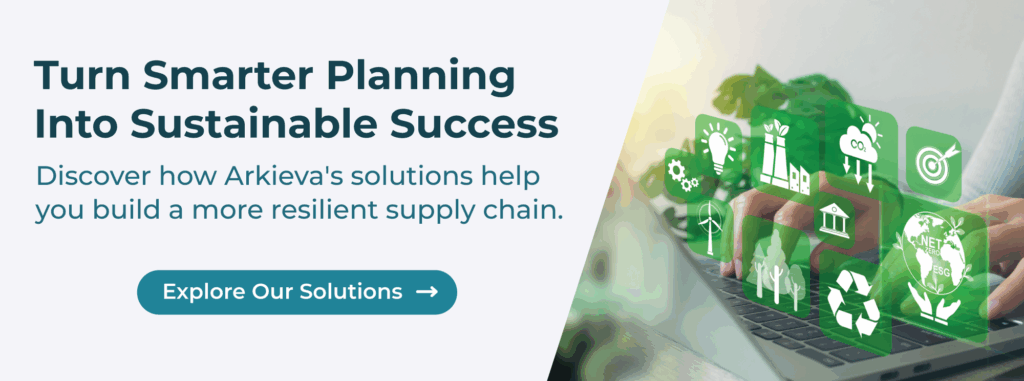Sustainability isn’t a trade-off; it’s a smarter way to do business. As supply chain leaders face mounting pressure from regulatory shifts, climate risks and customer expectations, the conversation has shifted from ‘why invest in sustainability?’ to ‘how can we plan for it effectively?’
Forward-thinking organizations know that sustainability and profitability are not at odds. With the right planning tools and strategies, businesses can reduce environmental impact, increase operational efficiency and improve long-term resilience.
Here’s how.
Reduce Waste to Improve Margins
Reducing waste in the supply chain isn’t just good for the environment, it’s a direct path to stronger financial performance. Excess inventory, overproduction and inefficient transportation are common sources of waste that quietly eat away at margins while increasing emissions.
By improving demand forecasting, companies can produce more closely to actual market needs, avoiding the costs and environmental impact of surplus goods. Multi-echelon inventory optimization ensures the right amount of stock is held at the right locations, reducing unnecessary storage and spoilage. Proactive planning helps eliminate costly last-minute shipments, reducing both transportation expenses and environmental impact.
In short, strategic planning reduces waste, both operationally and environmentally, growing savings and creating a more sustainable supply chain in the process.
Optimize Transportation and Sourcing to Reduce Risk and Emissions
Transportation and sourcing decisions have a major impact on both cost and sustainability. Inefficient logistics not only drive-up fuel expenses but also contribute significantly to a company’s carbon footprint. At the same time, overly globalized supply chains expose businesses to disruption from geopolitical shifts, natural disasters and fluctuating trade regulations. Planning more strategically in these areas allows companies to improve both resilience and environmental performance.
By using planning tools to optimize transportation routes, consolidate shipments and evaluate more efficient modes, businesses can lower fuel consumption and reduce emissions.
Meanwhile, exploring nearshoring or reshoring strategies helps shorten supply lines, decrease reliance on volatile global networks and reduce the emissions tied to long-haul transportation. Scenario modeling makes it possible to compare the trade-offs between cost, service and environmental impact, helping businesses make sourcing and logistics decisions that support long-term stability and sustainability.
Use Data to Drive Smarter Decisions and Strengthen Accountability
Sustainable planning requires more than good intentions; it demands clear, actionable data. The most effective supply chain teams integrate sustainability metrics directly into their planning processes, allowing them to evaluate trade-offs, track progress and align environmental goals with business priorities. Rather than treating sustainability as a separate initiative, it becomes part of everyday decision-making.
With the right planning tools, businesses can monitor key performance indicators like carbon emissions, resource utilization and Scope 3 impact across categories and product groups. In an environment of increasing regulatory and investor scrutiny, integrated planning and reporting ensures that sustainability efforts are both credible and measurable.
Where Sustainability Meets Efficiency
Sustainable planning isn’t a siloed initiative, it’s part of smart, modern supply chain planning. When sustainability is embedded into your supply chain planning process, you’re better equipped to reduce costs, mitigate risk and improve business performance.
At Arkieva, we help companies make more informed planning decisions that align with both environmental and economic goals. Whether you’re optimizing routes, managing inventory more efficiently or planning for regional sourcing, our platform supports your sustainability journey, because doing the right thing should also help your business thrive.
This blog is part of a series examining best practices to refine your processes and develop a more reliable, more robust supply chain. You can use the following links to review other blogs in the series: demand planning, financial planning, inventory planning and scheduling.






